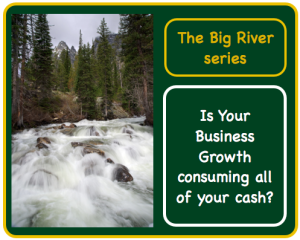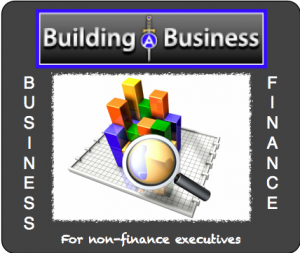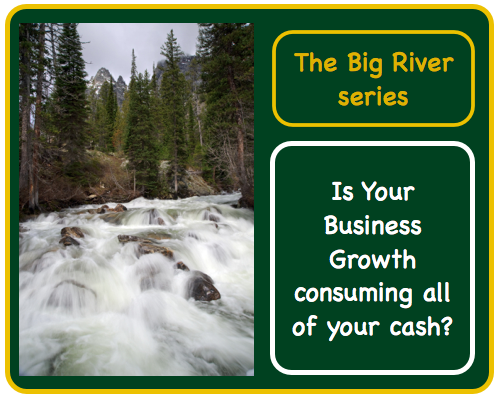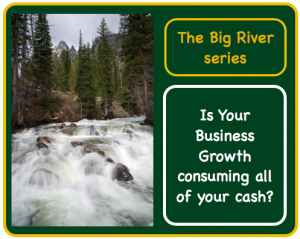If You Want To Trash Your Brand … Here’s a Good Way To Do It
A brand anthem expresses to your customers the core values related your brand and products, but it's easily trashed with one simple mistake.
A brand anthem expresses to your customers the core values related your brand and products, but it's easily trashed with one simple mistake.

 “Financial Adrenaline” is a term we love around here because it reflects our commitment to help you turbocharge your business with practical tips and techniques to improve free cash flow, the lifeblood of business. As a further extension of our Financial Adrenaline program, we’re going to share a new Business Finance Tidbit every Wednesday specifically for those business executives who don’t have a finance background. Our current Big River series started with We’re Making Money. Why are we broke? … then No Cash? Can we borrow what we need? and What if our loan collateral doesn’t cut it? Last week, we talked about the need for outside investors.
“Financial Adrenaline” is a term we love around here because it reflects our commitment to help you turbocharge your business with practical tips and techniques to improve free cash flow, the lifeblood of business. As a further extension of our Financial Adrenaline program, we’re going to share a new Business Finance Tidbit every Wednesday specifically for those business executives who don’t have a finance background. Our current Big River series started with We’re Making Money. Why are we broke? … then No Cash? Can we borrow what we need? and What if our loan collateral doesn’t cut it? Last week, we talked about the need for outside investors.
____________________________________________
“All intelligent investing is value investing — acquiring more than you are paying for. You must value the business in order to value the stock.”
~ Charlie Munger
 John Wilson, CEO of Ace Business Stuff, spent the last few weeks preparing for his meeting with Lary Blogger. He called a few days ago to follow up on his recent conversation with his attorney, Frank Lee Documents, when they spoke about investors, [kastooltip msg=”Dilution” tooltip=”A reduction in earning per share of common stock that occurs through the issuance of additional shares or the conversion of convertible securities”] and [kastooltip msg=”Valuation” tooltip=”The process of determining the current worth of a company. An analyst valuing a company may look at the company’s management, the composition of its capital structure, prospect of future earnings, and market value of assets. Judging the contributions of a company’s management would be more subjective, while calculating intrinsic value based on future earnings would be an objective technique.”].
John Wilson, CEO of Ace Business Stuff, spent the last few weeks preparing for his meeting with Lary Blogger. He called a few days ago to follow up on his recent conversation with his attorney, Frank Lee Documents, when they spoke about investors, [kastooltip msg=”Dilution” tooltip=”A reduction in earning per share of common stock that occurs through the issuance of additional shares or the conversion of convertible securities”] and [kastooltip msg=”Valuation” tooltip=”The process of determining the current worth of a company. An analyst valuing a company may look at the company’s management, the composition of its capital structure, prospect of future earnings, and market value of assets. Judging the contributions of a company’s management would be more subjective, while calculating intrinsic value based on future earnings would be an objective technique.”].
“Hi, Lary. I appreciate your coming by to meet in person to talk further about some of the issues we discussed a few weeks ago. Can we talk about valuation first, since that seems to be the foundation for conversations with prospective investors? (more…)


“John, are you ready for our meeting? We said yesterday that we were going to meet to go over our financial projections and review a possible bank proposal.”
“I’ll be right there, Tom,” John Wilson, company CEO said to his controller.
John reflected on their conversation last week about the Company’s expected negative cash flow and the need to borrow from their bank, most of which resulted from giving extended terms to their customers.
John learned his lesson and wanted to avoid borrowing, but Tom had been pretty explicit about the need.
“John, I’ve gone over our short term cash needs again,” Tom said after they gathered in the conference room and were looking at some numbers on the overhead projector.
“I’ve created a simple example on the screen with all the numbers shown in thousands, which you can see in Figure 1 – Borrowing Availability, below. (more…)


“We’re broke,” Tom mumbled to himself. Tom Sampson is the controller of Ace Business Stuff and was reviewing his latest calculations about their cash flow.
“What do you mean, we’re broke?” Tom looked up sheepishly to see John Wilson standing in his doorway. He fingered his collar and turned to address the company’s CEO. “We can’t be broke because business has never been better,” John said. (more…)
____________________________________________
So, why not jump into the deep end right now by reading Business Finance is about much more than finance
I’ve said before that leaders don’t have the luxury of confining their interests to just a few things
 ‘Always ask why. Dig deeper. Get the facts.’ Avoid the crowd mentality
‘Always ask why. Dig deeper. Get the facts.’ Avoid the crowd mentality“Ask Why” was their motto.
“Wheel Out,” “Fat Boy” “Death Star” and “Get Shorty” were some of the nicknames applied to their strategies.
Confirmation letters of successful trades were addressed to names like “Mr. M. Yass and “Mr. M. Smart” … and I think you can parse the underlying contempt.
“Rank & Yank” described their people performance system, “Pump and Dump” their trading strategy.
About $70 billion of market value was destroyed, more than 20,000 employees lost their jobs and pension funds worth $3.2 billion were destroyed, more than two thirds of which belonged to retirees with little chance to rebuild.
I had always intended to watch “The Smartest Guys in the Room,” the 2005 movie based on a book by the same name from co-authors Peter Elking and Bethany McLean, but it got lost in the shuffle until last week.
It chronicles the Enron cataclysm, whose meteoric ascent was violently terminated with its bankruptcy on Dec. 3, 2001.
It’s hard to believe this happened almost 10 years ago since to be “like Enron” still reverberates as an ignominious curse. It’s really more like a viral infection, though, because so many of the forces that drove its destruction have cleaved similar fissures in scandals from (more…)
~ Thomas Carlyle
 A lady walked into a neighborhood market one day and spoke loudly over the counter to the head butcher.
A lady walked into a neighborhood market one day and spoke loudly over the counter to the head butcher.
“Your prices these days are atrocious, Sal. Joe’s Deli across the street is selling your $10 chuck roast for only $5!”
“I know, Mrs. Haggle. I saw the sign. The thing is . . . Joe doesn’t have any chuck roast.”
So, the law of supply and demand rears its head again, some days a beautiful vision, other days an ugly hag. We’re surrounded by her mystique everywhere we go. Traffic is tied up because there are more cars than highway space. Starbuck’s is backed up because people want coffee faster than it can be made. There are no paper clips in the supply room but there’s plenty of fruitcake left in the kitchen.
Supply and demand drove markets long before economists appeared … and its jarring prevalence is unavoidable. One of my favorite examples is (more…)
We knew that 2010 was a pretty "fowl" year didn't we ... but did you think that the price of a French hen would increase by 233%? Or that two turtle doves would now cost 78.6% more? That a lone partridge would go up 20%?Not that there's anything wrong with…
What are we going to be covering in this 1st podcast in our Action Planning Course? These days, we're all busier today than a woodchuck chucking wood ... so it's refreshing when we can listen for a few minutes on the way to work to grab a little inspiration to…